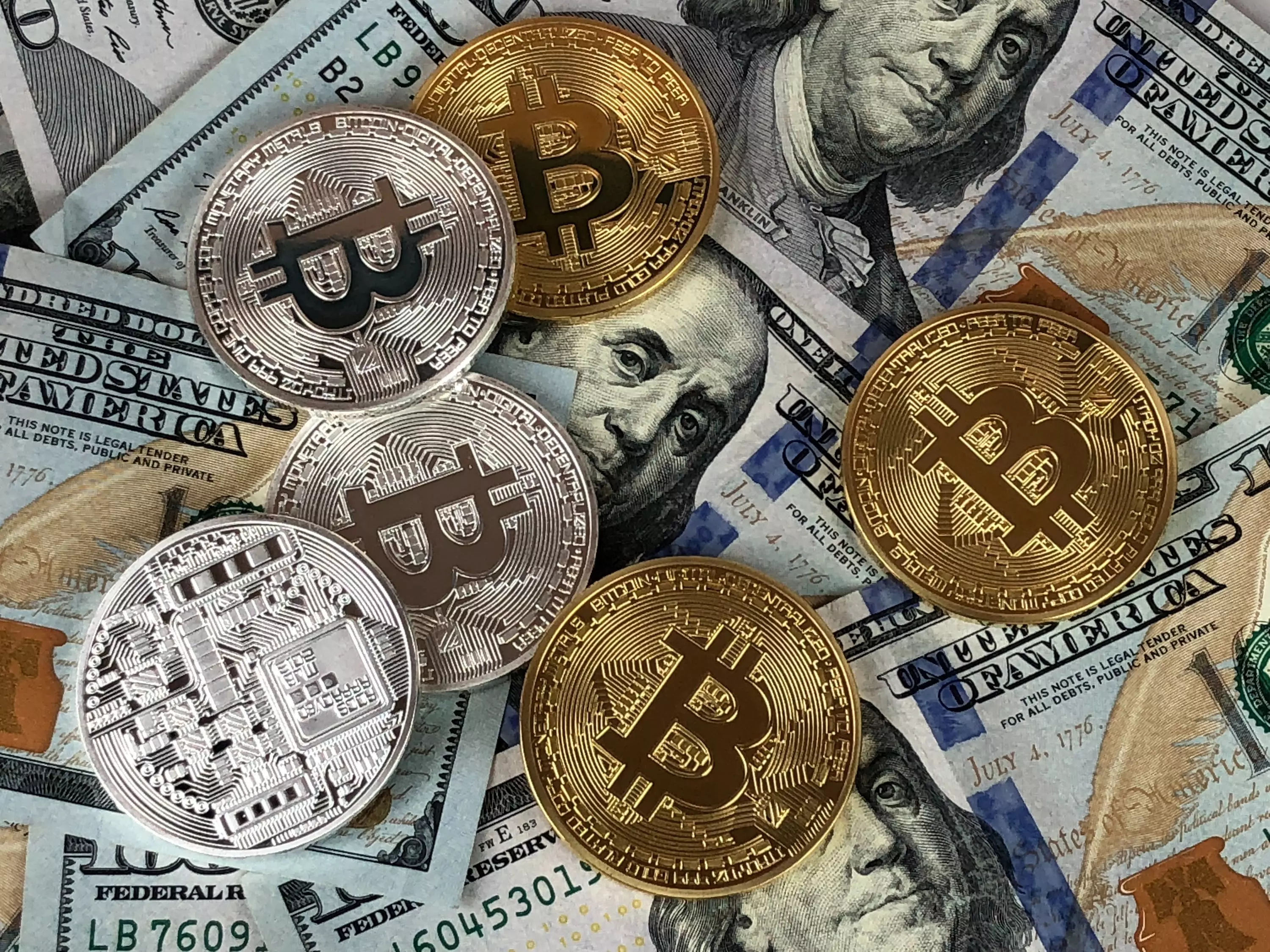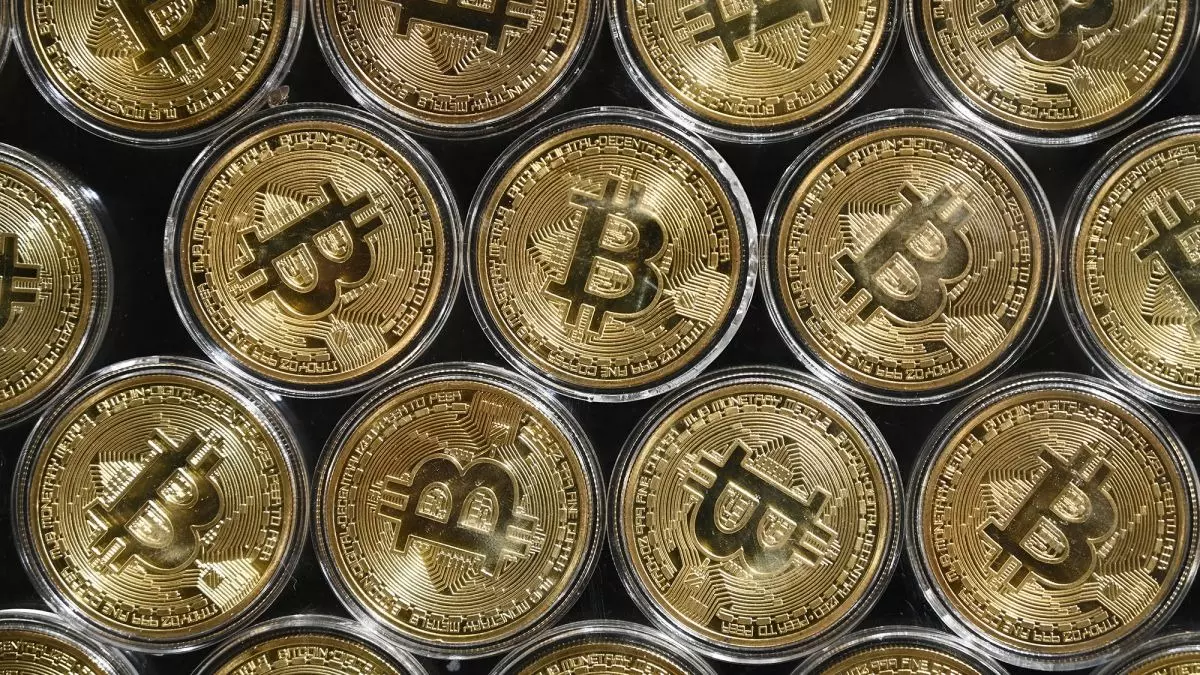Why is a Bitcoin ETF so important to Bitcoin maximalists? Because of the way market structure has evolved over the past decade, a Bitcoin ETF has the potential to push Bitcoin to levels even higher than what we’re seeing today.
Samantha Reid was holding her phone and tapping away to ensure that the QR code that was her ticket to see her favorite black metal band didn’t disappear from her phone.
As Reid made her way towards the concert hall, which was an old college theater, she realized that many like her were also making their way to the venue.
Around the block a steady stream of bodies was lining up to see the band “Saltpeter” live in concert.
Right away, Reid noticed that part of the reason the line kept growing was that there was only one entrance into the concert hall.
So even though there were like five or six staff scanning tickets with their mobile phones, only one or two people could file into the concert hall at a time.
And when it came time for Reid to finally make her way into the hall, she also noticed that the other exits were blocked off by band equipment, or unused furniture — surely this couldn’t be safe she thought.
So halfway through the concert when a fire broke out at the backstage area, a stampede of people rushing for the exits crushed everyone — almost in an instant, sweaty bodies were falling on top of one another as the concert hall quickly built up with thick smoke.
To make matters worse the fire killed the lights and the room was in darkness, with the sole emergency exit light obscured by the thick black smoke.
In a panic, Reid tried to find her way to the floor, to avoid the smoke and at the same time used her phone to try and illuminate a path to another exit — but there was none.
The problem when it comes to venues is that people often consider the size of the theater, when the reality is they should worry about the size of the exits, just like a Bitcoin ETF.
Bitcoin ETF or Bust or Both

Over the past two and a half decades, there has been an unprecedented growth in passive investing, yet the investing public remains blissfully oblivious to just how much this method of allocating capital has become the primary mechanism with which investments occur.
Regulatory changes in the United States, influenced in no small part by the lobbying activities of passive investing giants like Vanguard and Blackrock, have led to an explosion of capital in passive investing.
Today, over 100% of gross flows in the stock market are passive — and nearly 85 cents out of every incremental retirement dollar flows into a target date fund.
How did we get here?
By seductively simple (but flawed) logic.
The adage goes that given how volatile markets are, investors shouldn’t try to time them, instead, they should just passively allocate whatever spare capital they have, when they have it, into low cost index funds.
Over time, public markets are supposed to represent collective wisdom — the “wisdom of the crowds” or the Efficient Market Hypothesis — at work.
The Efficient Market Hypothesis posits that the current market prices of securities should reflect all available information, as a result, trying to “beat the market” is a exercise in futility, investors should just passively try to participate.
The Real Cost of Participation

But the assumptions behind the Efficient Market Hypothesis are deeply flawed — no transaction costs, free information, homogeneous expectations and rational investors.
As the GameStop saga clearly demonstrated, few, if any, of these assumptions underpinning the Efficient Market Hypothesis, are even remotely steeped in reality.
Yet somehow, the arguments for passive index investing over active management has been so ingrained in investor psyche it’s almost assumed as law.
A simple thought exercise proposed by William Sharpe (you know, that guy who gave us the “Sharpe Ratio”) in 1991, termed “The Arithmetic of Active Management” has become enshrined as the cornerstone of low cost investing for superior returns.
Once again, investors were lured into the seductive simplicity of Sharpe’s work,
“If ‘active’ and ‘passive’ management styles are defined in sensible ways, it must be the case that before costs, the return on the average actively managed dollar will equal the return on the average passively managed dollar and after costs, the return on the average actively managed dollar will be less than the return on the average passively managed dollar.”
That “simple” postulation set the stage for a revolution in investing with fees for managing assets collapsing over the last twenty-five years.
These declines have taken the form of reduced annual fees, reduced sales load fees and reduced sales commissions — investors were getting the mother of all free lunches.
But what if those assumptions behind the Efficient Market Hypothesis were wrong (spoiler alert — they’re wrong)?
Too Much Hype About Hypothesis

The problem with the Efficient Market Hypothesis is that it assumes an investor holds the market portfolio.
But how does the investor get in? Magic.
How does an investor get out? This would also be magic.
Each new dollar that is invested into passive index funds must be forced into the market to purchase the securities in the benchmark index and these purchases exert an inexorable influence on the underlying securities.
Per Sharpe’s own work, these are then not passive investors — they are mindless systematic active investors with zero interest in fundamentals of the securities that they purchase.
Does it sound familiar?
It’s the reason why stocks have risen so much despite an economically debilitating pandemic.
As more money has flowed into the financial system, much of those monies have gone into passive funds, which have had to deploy the capital (almost instantaneously) and rolled them into the markets, pushing equity prices higher.
Making matters worse, low or zero fee investing came to a captive audience under lockdown, with the likes of SoFi and Robinhood providing idle investors spending their stimulus checks, a new outlet for stimulation.
And quite instead of reading the tomes of annual reports or analyzing the “fundamentals” of any specific security, this powerful retail investor segment of the market organized on Reddit and Twitter, to swing markets the way an ant can devour a fallen beast in the forest.
Which brings us to the proposed Bitcoin ETF.
Bitcoin ETF Bodes Well for Bitcoin Maximalists

Canada was the first country in North America to approve the Purpose Bitcoin ETF, which saw some US$165 million in shares traded at its debut on the Toronto stock exchange.
But Bitcoin ETF-like products have been around for awhile in Europe, so why all the hype.
Hope is growing that Canada’s first move into a Bitcoin ETF may spur the U.S. into action, the same way the U.S. approved a cannabis ETF soon after its neighbor to the north did so.
And when or if such a Bitcoin ETF gets approved, you can bet your last Satoshi that the price of Bitcoin will surge.
Why?
Because of the Efficient Market Hypothesis.
If ever there was an asset class where the Efficient Market Hypothesis could be abused — it would be in its application to cryptocurrencies.
Because Bitcoin has no fundamentals for assessment anyway, it’s seductively simple (and financially lucrative) to sell any narrative that encourages passive fund flows.
The argument could go along the lines that given there’s no way to predict how high or low Bitcoin can go, timing the entry (or exit) for Bitcoin is useless.
Instead of trying to guess when Bitcoin is at an all-time-high or otherwise, investors should just passively buy a Bitcoin ETF that will simply track the long term price trend for Bitcoin, to gain “exposure” to the asset.
The only problem is, if flows only go in one direction, then Bitcoin can only move in one direction — upwards — especially if this narrative is bought into.
To be sure, current market conditions lend themselves particularly well to the misallocation of capital — leverage driven by low interest rates and the prevalence of passive investing have resulted in gross distortions of capital allocation, while further bifurcating society into the haves and the have nots.
Bitcoin’s narrative is seductive in that it offers anyone the opportunity to get rich and to guard against the debasement of fiat currencies, primarily the dollar.
So Bitcoin ETF

To round off, let’s go back to the GameStop saga.
One factor that made the GameStop short squeeze so profound was passive ownership — one out of every four available GameStop shares was owned by passive investors in funds that essentially ran on autopilot.
As new money came in, it was allocated to keep a constant balance among a specific combination of individual stocks or other assets.
And even as GameStop’s shares rose to ridiculous heights, those passive funds were almost certainly buying to maintain their balance.
Passive funds have a much greater impact on prices because active investors can afford to be patient in deploying their capital, and are sensitive to the prices that they pay.
But passive investors need to deploy capital the minute the money comes through the door — they must buy if they have inflows.
And perversely — passive funds’ demand for a stock generally grows as the price of that security increases because the weighting of the stock in the indices they track increases — so long as such funds have inflows, they do not sell.
Now imagine a passive fund with a mandate to also buy Bitcoin ETFs.
As Bitcoin’s price rises, it forms a positive feedback loop to passive funds to buy more Bitcoin.
And as more money flows into these passive funds and as the price of Bitcoin rises, these automatons then need to buy more Bitcoin to maintain that balance — which feeds Bitcoin’s price rally which causes them to buy more Bitcoin ad infinitum.
Because Bitcoin is an unconstrained asset, there is in theory no limit to how long this self-perpetuating feedback loop can feed off of itself.
And that’s why a Bitcoin ETF will more likely than not feed into Bitcoin’s price rise, provided that passive funds have the mandate to buy Bitcoin.
As investors, it’s important to not just focus on the market cap of Bitcoin (around US$1 trillion but who’s counting?) but the size of the exit as well.
Because getting in is one thing, what happens when someone wants to get out?








Leave your comments
Post comment as a guest